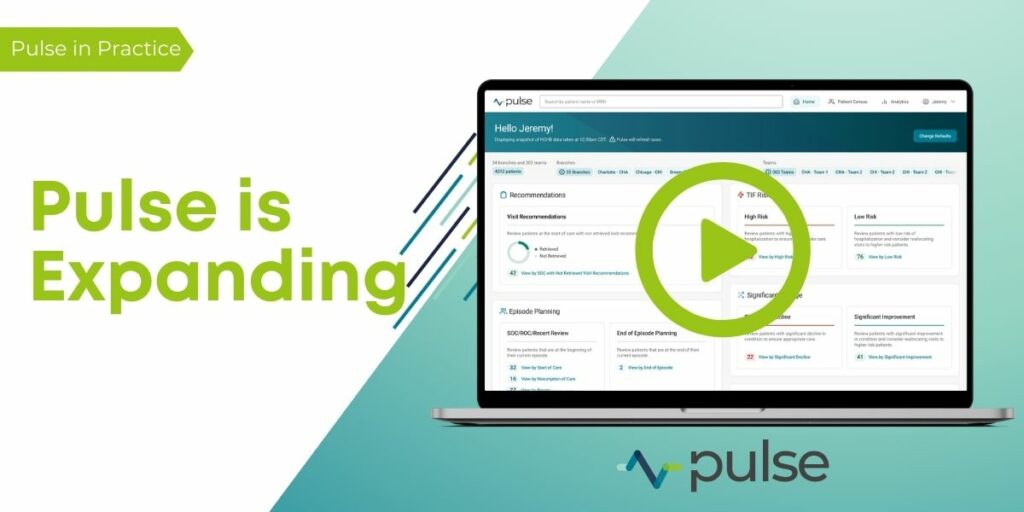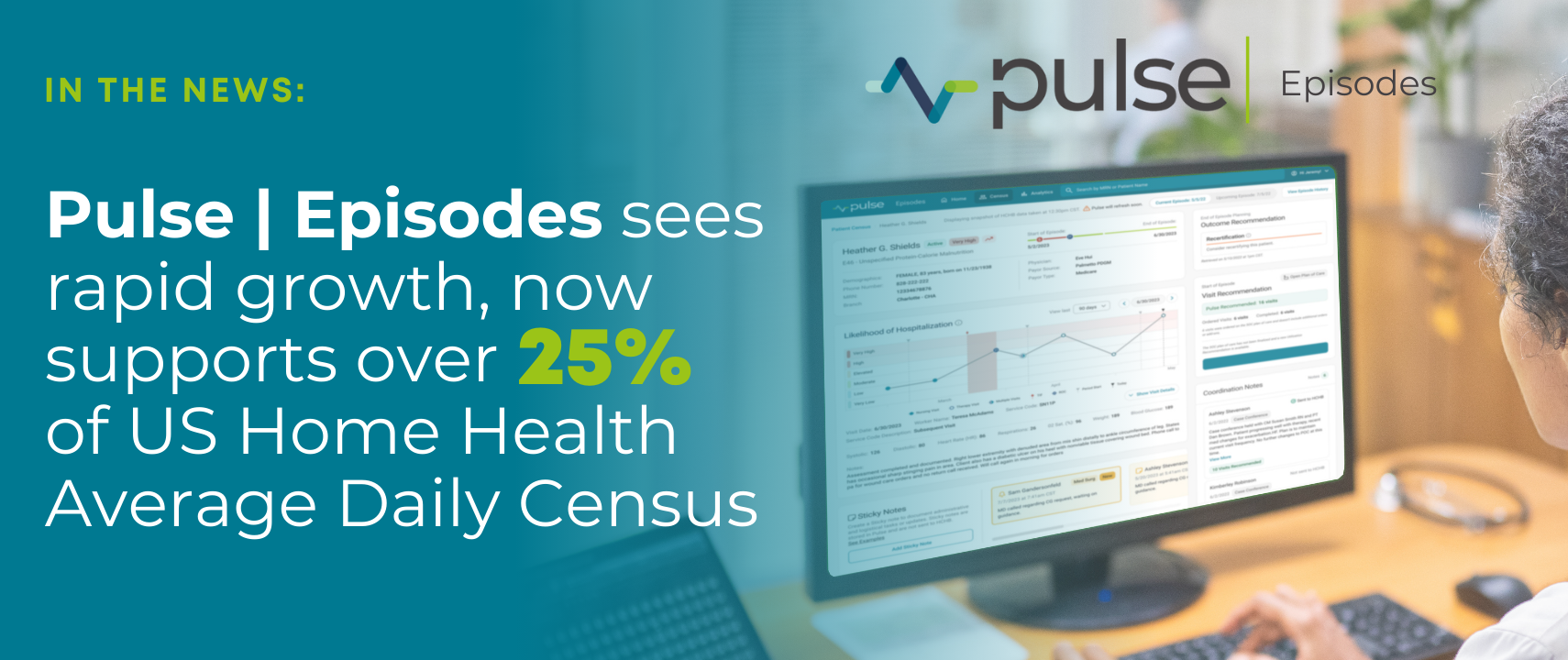Pulse Referrals & Admissions: A Q&A with Medalogix President and CEO Elliott Wood
With our new Referrals & Admissions module now available for purchase, we sat down with Medalogix President and CEO Elliott Wood to talk through what the product is, why we built it, and the problems it solves in the home health industry. As our conversation makes clear, this is an exciting development in the application of Generative AI technology and a major opportunity for home health agencies.
First off, what is Referrals & Admissions?
The new Referrals & Admissions module is the newest addition to our Pulse home health platform, and we’re very excited about it. We use the latest large language model (LLM) AI to review referrals in a fraction of the time it currently takes intake staff working manually. The product summarizes referral packets into a single-page summary, and links directly to the relevant documentation behind key details. What this does is enable a complete review of every record with consistent accuracy, while also helping home health teams spend less time on administration and more on care planning and direct patient interaction.
Once intake teams have reviewed and finalized the referral summary, Referrals & Admissions uses Generative AI to compare referral documents and assessments against coding and OASIS responses. This creates “AI Insights” that show opportunities to improve documentation as it relates to the patient’s history and current impairments. Complete, accurate documentation ensures clinical awareness of the patient’s needs. Therefore, this effort should ensure a more accurate plan of care, leading to improved patient care, better patient and family experiences, and coding and reimbursement accuracy.
Why did you build this particular product?
We’ve had the opportunity to work with agencies and home health data for 15 years, and we’ve seen that the industry has documentation and data challenges which haven’t been adequately addressed. For example, our customers receive referrals from various sources, and their documents come in all shapes and sizes. Some referral packets are 4-6 pages, but others are massive – up to 200 pages. These packets take an immense amount of time to manually review, which is inefficient, error prone, and detracts from focused patient time.
There are a few significant issues when documentation isn’t complete or fully accurate. The most important impacts are on care planning and patient experience, but there are also financial consequences for agencies. This is where AI-supported clinical documentation improvement (CDI) comes in. By making sure patient documentation reflects the full picture, clinicians can provide better care. Because coding is based on underlying clinical records, coding and reimbursement improvements naturally follow.
These documentation issues are exactly the kind of situation where AI makes sense – simplifying time-consuming tasks so humans can do what we’re best at. Whether you’re manually reviewing documentation in house or paying someone else to do it, humans aren’t especially efficient. Generative AI has gotten to the point where we can direct it to accurately surface the key points clinicians need to make decisions. This frees them up to focus where their expertise is most needed.
Our Mission is making sure patients are taken care of as well as possible. That’s why we’re in this business, and we know that our solutions in this space help home health teams plan better and more timely care with documentation that better reflects their patients’ condition. While there are financial benefits to agencies who adopt Referrals & Admissions, we first want to improve patient care and quality. We’ve found that doing right by the patient leads to improvements in case mix and reimbursement.
What if an agency already has a coding solution?
Pulse Referrals & Admissions starts to impact data quality right away, not just when it’s time to code, so there’s already a benefit at the point of care. Specifically to coding – when coding teams are doing their work, they’re referencing PDGM, OASIS, and other data, meaning their accuracy is only as good as the documents they’re looking at. Gaps persist even when an agency is already using a coding solution. There’s likely still a place for coding technology to make those workflows more efficient. Referrals & Admissions improves the quality of data coming in, so the coding coming out is better. As I mentioned, this has financial impacts for the agency as well in the form of more accurate reimbursements.
On top of the benefits to documentation and coding, the Referrals & Admissions module itself helps with cross-functional coordination, historical episode processing, and other helpful use cases. So, the product is bringing value beyond an apples-to-apples comparison with coding tech.
What about agencies that already feel good about intake, scrubbing, and coding?
I wouldn’t say it’s impossible for this to all be done manually, internally or externally, but it’s honestly not the best way to do it given the new technology available. Keeping up with complete, accurate, and timely documentation is already challenging, and it’s only going to get harder as more of our population ages and staffing challenges persist. Referrals & Admissions is already at the point where our diagnostic recommendations are more accurate than human reviewers alone.
We believe in empowering home health professionals to do their best, most impactful work, and that’s most likely to happen by leveraging technology in targeted ways. AI can’t provide compassionate care to patients, but it can make sure home health teams have more time to do so. Because Referrals & Admissions reads the documents and gives back a concise clinical snapshot, we’re helping our customers know exactly what they’re walking into for that first visit, which just starts the patient experience off on the right foot.
Any final thoughts?
We’re excited about how this solution is going to help address real challenges in the home health industry and benefit both our customers and their patients. There are so many great impacts Referrals & Admissions brings to the table, from more efficient referral processing and reduced time to admission to evidence-based OASIS documents and accurate coding and reimbursements. We’re looking forward to getting this technology in the hands of as many agencies as we can.If you’d like to learn more, schedule a demo and we’d love to talk to you.

Related Blogs

HHVBP: A Winning Strategy for Home Health Providers
The start of 2025 has ushered in a wave of new realities for Home Health...

Pulse Episodes sees rapid growth, now supports over 25% of US Home Health Average Daily Census
[Nashville, January 2, 2025] Medalogix, the leading data science and cli...

Pulse Referrals & Admissions: Real-world AI impact in a sea of hype
Throughout the tech space, including home health, much has been said rec...


